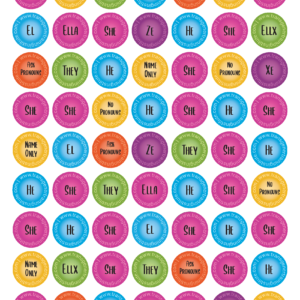

Starting in the Middle Ages, literary authors from Chaucer to Shakespeare to Jane Austen have used the singular “they” to describe someone’s features. In Oaxaca, Mexico, the self-proclaimed “third gender” muxes mirror Western culture’s understanding of what it means to be genderqueer. For other indigenous North Americans, the term two spirit describes Native people who fulfill a traditional third-gender (or other gender-variant) ceremonial role in their cultures. In the U.S., some traditional Diné Native Americans acknowledge a spectrum of four genders: feminine woman, masculine woman, feminine man and masculine man. Hijras are officially recognized as a third gender in India, Pakistan and Bangladesh. The recognition is recorded in India as early as the eighth century B.C. It is important to note that more than two genders have been documented since antiquity. It is a further source of distress, anxiety and depression. For those who know that their physical body does not reflect their true gender, misgendering can make them feel disrespected, invalidated, dismissed or alienated. And yet, when improperly applied, they can cause serious psychological harm. Pronouns are among the shortest words in the English language. Non-binary persons may use pronouns that are neither masculine nor feminine, such as “they” or “ze.” Transgender persons may use pronouns connected to their authentic, rather than their assigned gender. To transgender and non-binary persons, the correct pronouns really matter. So within our circles of family and colleagues, where we feel safe to do so, it is worth asking: what are your pronouns? Or in other words, how do you relate to your gender? Even Tiny Words Can Cause Harm Yet inclusive contact-even virtual-among human beings is more vital than ever.

Of course, with so many still social distancing due to coronavirus, this may need to be done remotely. International Non-Binary Day on July 14 is a good time for all of us to truly see those around us. Some identities included in this umbrella would be genderqueer, gender non-conforming, agender and genderfluid.

Non-binary identities are varied and can include people who identify with some aspects of binary identities, while others reject them entirely. I use “non-binary” as an umbrella term to represent those whose gender identity does not sit comfortably with male or female. For non-binary or genderqueer individuals, and those who relate to gender in a fluid way, to be misgendered can be a micro-aggression, or worse, harassment. What’s in a pronoun? Does he, him, his not apply to every person who is perceived as a male? Or she, her, hers to a perceived female? In our non-binary world, they do not.


 0 kommentar(er)
0 kommentar(er)
